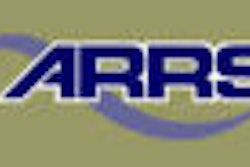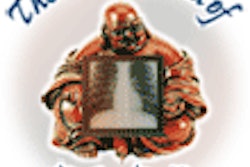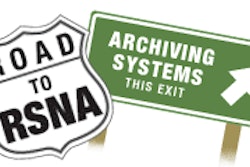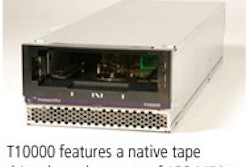Maintaining the integrity of archived DICOM objects is critical, so PACS purchasers must address the issue of data migration in the initial contract with their vendor, according to Dr. Steven Horii, clinical director of the medical informatics group at the University of Pennsylvania Medical Center (UPMC) in Philadelphia.
"Obtain a prenuptial agreement," Horii said. "A vendor must not be allowed to store studies in a proprietary lossy format unless you want to marry the vendor permanently."
He spoke during a talk at the March PACS 2006: Digital Healthcare Information and Management Systems (DHIMS) conference, held in San Antonio and sponsored by the University of Rochester School of Medicine and Dentistry.
DICOM objects are essentially the information that DICOM deals with, including images, waveforms, structured reports, and presentation states, Horii said. They consist of the header (metadata), which include patient demographics, information about the procedure and imaging system used, information about pixel data (i.e., the image), and proprietary fields used by the vendor. The object also includes the pixel data itself.
Since DICOM objects will eventually have to be migrated, it's important to maintain their integrity, Horii said. The statutory retention period of a study can be longer than the life of the storage system or media, and the effective life of a PACS network is three to six years. Studies must then be migrated to a new system, he explained.
By maintaining the integrity of DICOM studies, studies can also be made more easily available to referring physicians and other healthcare institutions, Horii said. In addition, it will reduce the cost of integration with other information systems, and provide more options for disaster recovery and business continuance, he said.
Shadow groups
One issue to be aware of is the use of DICOM shadow groups, which are intended for manufacturers and users to include material in DICOM objects that are not currently part of the standard, Horii said. Shadow groups immediately follow the standard groups in an object. For example, a shadow group of 0018 would be 0019; all DICOM standard groups have even-numbered groups, according to Horii.
The shadow groups convey the same general type of information as the standard group, and are used to place information that's needed for the equipment, but are not currently available as elements in standard groups, he said.
Manufacturers can also use the shadow groups for testing elements for eventual inclusion in standard groups, Horii said.
Shadow groups can be misused, however, when information is included in elements of shadow groups instead of the standard groups where they belong, he said.
"That's a violation of DICOM convention," Horii said. "If you've got the stuff, put it in the right place."
Vendors can also incorporate elements in shadow groups purely to put competitors at a disadvantage, a violation of the spirit of DICOM, Horii said.
And shadow groups do create a dilemma for storage systems. DICOM convention says that a conforming device does not have to interpret shadow group elements that it doesn't recognize, he said.
Including the shadow groups in storage would seem to be the most robust way to deal with them, however, according to Horii.
"As a DICOM archive, what you get is what you should give back," he said. "A storage vendor different from a DHIMS vendor would have to (store the shadow groups) if retrieved objects are to work properly."
Another option would be to remove all shadow groups before storing them, returning the objects containing only the standard groups, Horii said.
"This would cause major problems with some security systems -- those that use digital signatures and message digests," he said. "That data is computed on the entire object. If you take the shadow groups off, you're going to get a message digest or a digital signature that fails to match that computed from the original object."
Also, if the original object is stored in a different system, there would now be two different DICOM objects with the same unique identifier (UID). If the DICOM object UID was then changed, that would impact the existing database entries for the object, Horii said.
In deciding how to proceed, users should understand that shadow groups are likely to be present in many vendors' DICOM objects, he said.
"Understand how the storage system and other devices from different vendors will treat the shadow groups in these objects," he said.
DICOM integrity can be degraded when studies are stored in proprietary formats, especially proprietary lossy formats, Horii said. But, proprietary storage formats can lock you in with your current PACS vendor, he warned.
"They lock you into your current PACS vendor because it makes it very much tougher to migrate if I've got multiterabytes of stuff that's in a proprietary format," he said. "I have to convert it all back to DICOM or to another vendor's proprietary format on the way to changing vendors."
Integrity can also be degraded when information that's critical to retrieving a study is stored in the wrong DICOM field, such as when a medical record number (MRN) is placed in the comment field instead of the specified field, Horii said.
"All DHIMS clinical applications that support DICOM must support the DICOM service classes required to allow seamless transfer of studies between clinical applications," Horii said.
If the HIS or RIS has been upgraded, or if there has been a vendor change, the MRNs and patient identities need to be validated, he said. Dictionaries should also coincide to ensure consistent study descriptions.
Protecting integrity
DICOM objects can be protected by ensuring that modalities and devices support DICOM modality worklist (MWL), and by requiring vendors to complete all critical fields in the DICOM header to facilitate study migration, Horii said. All studies should be stored as DICOM Part 10 format, with no proprietary lossy formats permitted.
Institutions should also establish strict PACS purchasing standards for anything that touches the LAN or WAN, including modalities, information systems, infrastructure components, and storage and storage management components, he said.
Customers should also require that vendors, both new and old, support all necessary DICOM services classes needed to migrate data, according to Horii. This includes DICOM C-Find (archive), DICOM C-Move (archive), DICOM C-Store (archive), and DICOM query and retrieve (workstation).
The integrity of DICOM objects is critical during the initial PACS purchase, Horii said. Purchasing standards should be enforced.
Also, "purchase storage and storage management software from the storage vendor, not the PACS vendor," he said. "That helps you avoid proprietary storage problems."
Proprietary archive formats should not be accepted, Horii said.
The integrity of DICOM objects is also critical when changing PACS vendors or upgrading an existing PACS, and when consolidating storage components of isolated healthcare information systems to form an enterprise archive, he said.
By Erik L. Ridley
AuntMinnie.com staff writer
April 6, 2006
Related Reading
Workflow analysis yields process improvements, March 17, 2006
Digital dashboard eases radiology IT operation, March 16, 2006
Russian teleradiology network meets needs, exceeds expectations, March 6, 2006
Higher monitor luminance levels may hinder performance, February 27, 2006
PACS doesn't hurt pediatric ER performance, February 20, 2006
Copyright © 2006 AuntMinnie.com



















